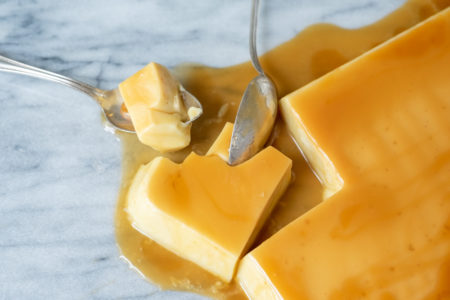I think most of us can agree that chocolate is simply the best. Creamy, sweet, and tasty it brings a wonderful flavor to almost everything it’s added to. As great as chocolate is, baking with it can be a bit of a challenge. Anyone who’s attempted to melt chocolate only to end up with a grainy and gloopy mess knows the hazards of baking with this cocoa-laced treat.
So if you’re about to embark on a baking journey with everyone’s favorite sweet treat read on:
1. Melt chocolate without any fancy tools
Considering how quickly things can go wrong, melting chocolate is an intimidating prospect for many first time bakers. Getting the right temperature can be a challenge and most of us don’t have a convenient bain-marie that we can whip out for such an occasion. Fortunately, not only is melting chocolate easier than it sounds, but it can also be achieved using items that are probably already cluttering up your kitchen cupboards.
All you need for melting chocolate is a pan with some water and a heatproof bowl. Put about 2 inches of water into a pan and place it on a burner. Place your solid chocolate into the heatproof bowl and place the bowl in the water. Turn on the burner and bring the water to a very gentle simmer. Once the water is simmering immediately turn off the heat and remove the pan from the burner. Once the chocolate has melted remove the bowl from the pan.
2. Avoid chocolate chips unless you’re making cookies

Chocolate chips are great! Convenient, tasty, and easy to find they are an absolute godsend in the kitchen. Unfortunately, though they are often used in lieu of real chocolate when baking. While chips can be used for recipes that require melting chocolate, they are far from ideal. Chocolate chips are designed to melt slower than regular baking chocolate and should only be used when making cookies.
3. Know the difference between tempering and melting

While on the surface they may sound like the same thing, melting and tempering are two different processes used for different purposes.
Melting involves heating the chocolate solids until they form a liquid, that liquid can then be added to recipes. Melted chocolate is easier to incorporate into batters and mixes, or can be used as a sauce.
Tempering, on the other hand, involves melting the chocolate, cooling the chocolate, and then gently reheating it again. This process breaks down the fat crystals in the chocolate and creates new ones that when hardened give the cold chocolate a smooth and shiny appearance and an almost glass-like texture. Tempering should be used for recipes that require a hard chocolate decoration or coating.
4. When in doubt use 60% cocoa

Often a recipe will call for simple “chocolate.” While it may be tempting to just go with your gut, it’s important that you use the right chocolate for the job. But what if your recipe doesn’t offer any hints and you’re unable to figure out which chocolate will be best? In these rare cases make sure that you use chocolate that is labeled as having 60% cocoa. This is the percentage most commonly found in baking and semi-sweet chocolate and should work in the majority of recipes.



